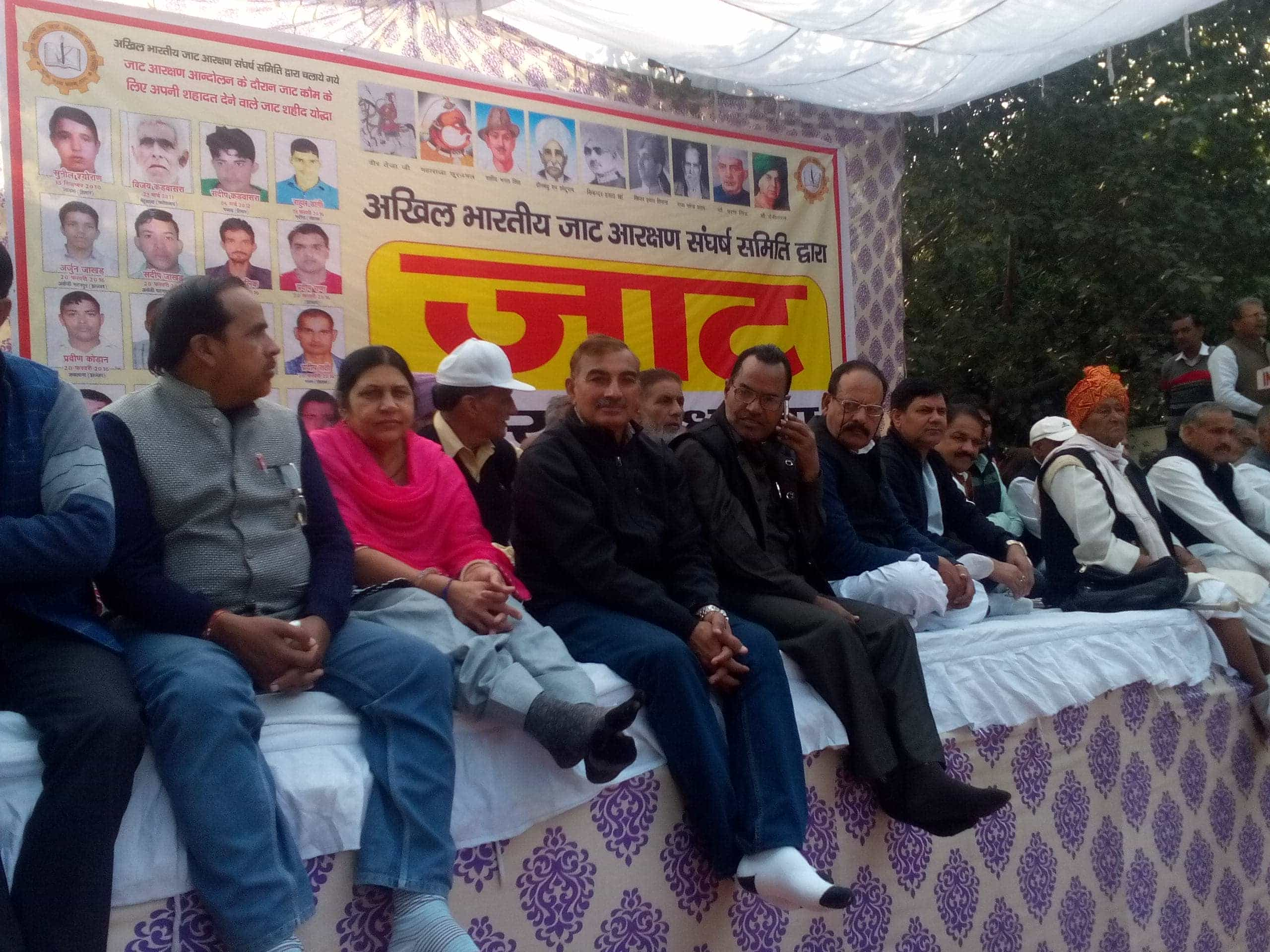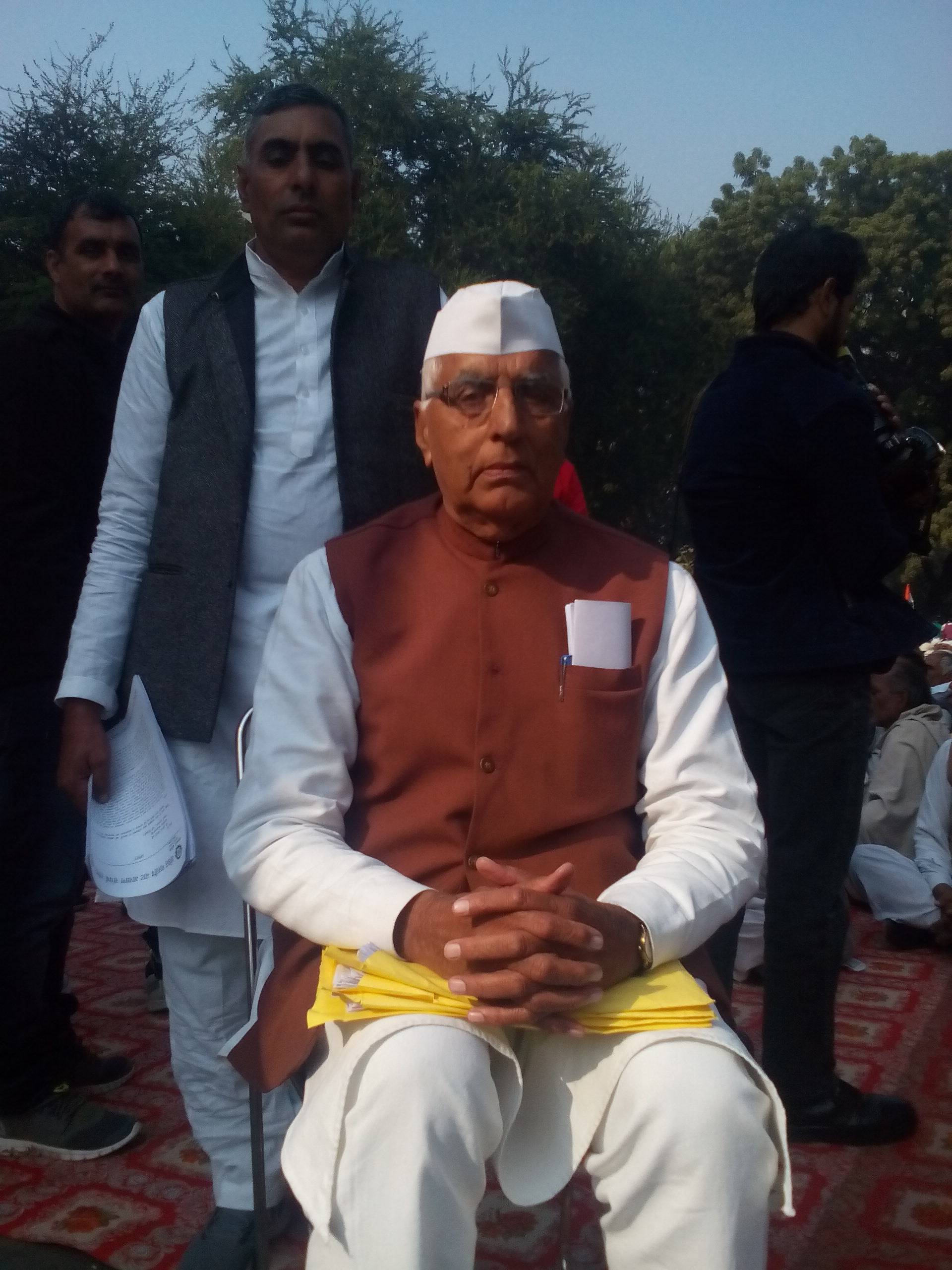Listener of Small Voices | Posted on |
Jat Threats
0
5009 Views
Not the Creamy Layer
They were back. Headed by their bolshie leader Yashpal Malik; with their now signature bullheaded belligerence, they streamed down Jantar Mantar street to demand Jats to be on the central OBC (Other ‘backward’ Caste) list to be qualified for the 27% reserved quotas in government jobs, as well as some government-backed educational institutions.
 (Jat Protest Participants)
(Jat Protest Participants)
This was yet another show of ‘strength’ by the Akhil Bhartiya Jat Arakshan Sangharsh Samiti (ABJASS) led by Yashpal Malik from Haryana. The podium too burst with organization representatives - big, burly, almost exclusively male - from various parts of the country.
 (The Podium)
(The Podium)
Jats are an agricultural community originally from north India, scattered now across the country (and the world). They do not share a language or religion but identify with and share past links with this ancestral and geographical group. In Haryana, their stronghold, they constitute 20% of the population. And not a poor, disadvantaged one.
“The community probably owns three-fourths of agricultural land in Haryana, with the Jat being synonymous with the ‘zamindar’ just as much as the Bania with the trader. The Jats conform fully to the idea of a ‘dominant caste’ …… that is both numerically strong in a village or local area, as well as wields power through control over land,” reads Geeta Rani’s paper on Jat reservation published in International Journal of Humanities and Social Science Research.
But, even so, under political pressure, 7 of India’s 36 states and union territories have classified Jats as OBC’s in their states, like Rajasthan, Himachal, Delhi, Uttarakhand, Uttar Pradesh, Madhya Pradesh, and Chhattisgarh. Now, groups like of Malik, want this extended to all of India including Haryana, which has not always been supported by logic.
The National Commission of Backward Classes (NCBC) has set a 3-point criteria – social, educational and economic – for an OBC categorization: the caste should be considered socially backward by other castes; the school enrolment should be lower than the average by 25%; their assets too should be lower than average by 25%, which has consistently ruled out Jats from being classified as OBC in Haryana. Studies and reports undertaken by organizations like the Indian Institute of Public Administration (IIPA) and the Indian Council of Social Science Research (ICSSR) have backed this.
However, the Jats have provided a powerful vote-bank nuisance value, more so since 2014 when a non-Jat Chief Minister in Haryana – Manohar Lal Khattar of the BJP - was appointed after 18 years of Jat chief ministership.
Opportunistic political groups, like ABJASS, have realized they can paralyze states, and get political leaders scrambling to them when they choke highways and lay themselves down on railway tracks. These tactics reached their peak in 2016 when over 10 days, violence in Haryana killed at least 20 people, injured over 200 and suffered the state a loss of Rs. 20, 000 crore, in addition to horrific stories of rape and arson.
But now, with election-year looming near, Malik has issued an ultimatum to the central government for fulfilling their demand by February 09, 2019 or their organization will again resort to ‘peaceful’ demonstrations across the country.
BS Ahlawat, National Secretary General of ABJASS, living in Ghaziabad, himself retired from a government job has been working for Jat reservations for the past 10 years. “This agitation is not for my children or the creamy layer,” he claims, “but for my poor Jat brothers.”
 (BS Ahlawat, National Secretary General, ABJASS)
(BS Ahlawat, National Secretary General, ABJASS)
There is no doubt that farmers in Haryana are distressed, the economy is sluggish, poor education and employment opportunities are making youth restless. But only demanding reservations and organizing rallies and demonstrations may not be the solution. In fact, these may be counter-productive, inviting a strong backlash from other communities, especially if things spiral out of control as they did in February 2016.
